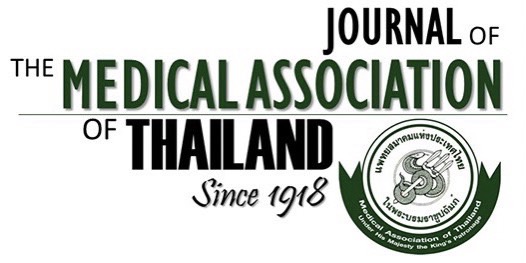In vitro Study of Antibiotic Susceptibility of Propionibacterium acnes Strains Isolated from Acne Vulgaris Patients
Aphakorn Laochunsuwan MD*, Malai Taweechotipatr PhD**, Montree Udompataikul MD*
Affiliation : * Skin Center, Srinakharinwirot University, Bangkok, Thailand ** Department of Microbiology, Srinakharinwirot University, Bangkok, Thailand
Background : Antibiotic-resistant Propionibacterium acnes has become a worldwide problem in recent years. The prevalence
of antibiotic resistance to this bacterium has increased in many countries. Over the past decade, there are few previous studies
regarding the incidence of antibiotic resistance and antimicrobial susceptibility of P. acnes in Thailand.
Objective : The aim of the present study is to determine the antibiotic susceptibility patterns of P. acnes strains from acne
patients in Thailand.
Material and Method: A cross sectional was used to investigate in this study. Ninety-five acne patients were enrolled. Samples
were collected from facial closed comedones using comedone extraction technique and isolated in an anaerobic condition. The
strains were identified by phenotypic characteristics and API 20A. Antibiotic susceptibility tests and minimal inhibitory
concentration (MIC) of P. acnes strains to five antibiotics that are commonly used in acne treatments in Thailand (erythromycin,
clindamycin, tetracycline, doxycycline and amoxicillin), were determined by the Epsilometer test method.
Results : Among 95 samples, P. acnes strains were isolated from 75 patients (78.95%). MIC90 of doxycycline, tetracycline,
amoxicillin, clindamycin and erythromycin were 1.7, 16, 0.016, 256 and 256 μg/mL, respectively. By using CLSI breakpoints
for resistance, forty-eight (64%) and forty-seven (62.66%) strains resisted to erythromycin and clindamycin, while only one
(1.33%) strain resisted to tetracycline. No resistance to doxycycline and amoxicillin was found in this present study. Moreover,
there were statistically significant differences among age groups, history of previous antibiotic treatment and macrolide
antibiotic resistance.
Conclusion : Among the antibiotics tested in the present study, the most common antibiotic resistance was erythromycin,
followed by clindamycin and tetracycline, respectively; whereas, no resistance to doxycycline and amoxicillin was found. The
antibiotic-resistant P. acnes strains have been continuously increasing in Thai acne patients from the present study.
Keywords : Acne vulgaris, Antibiotic resistance, Antibiotic susceptibility, Propionibacterium acnes



